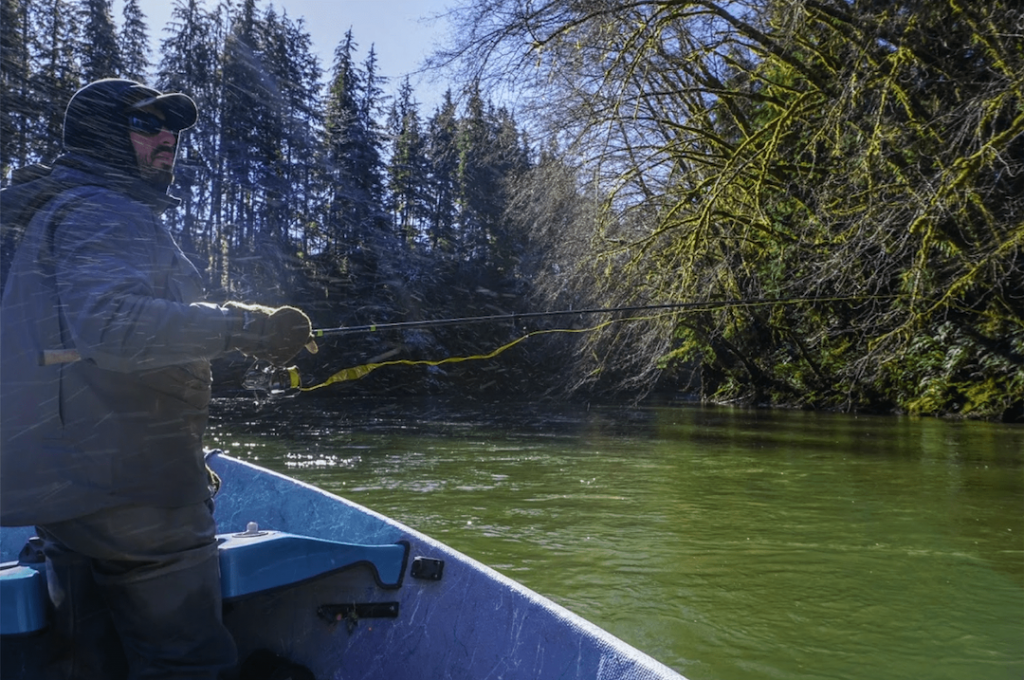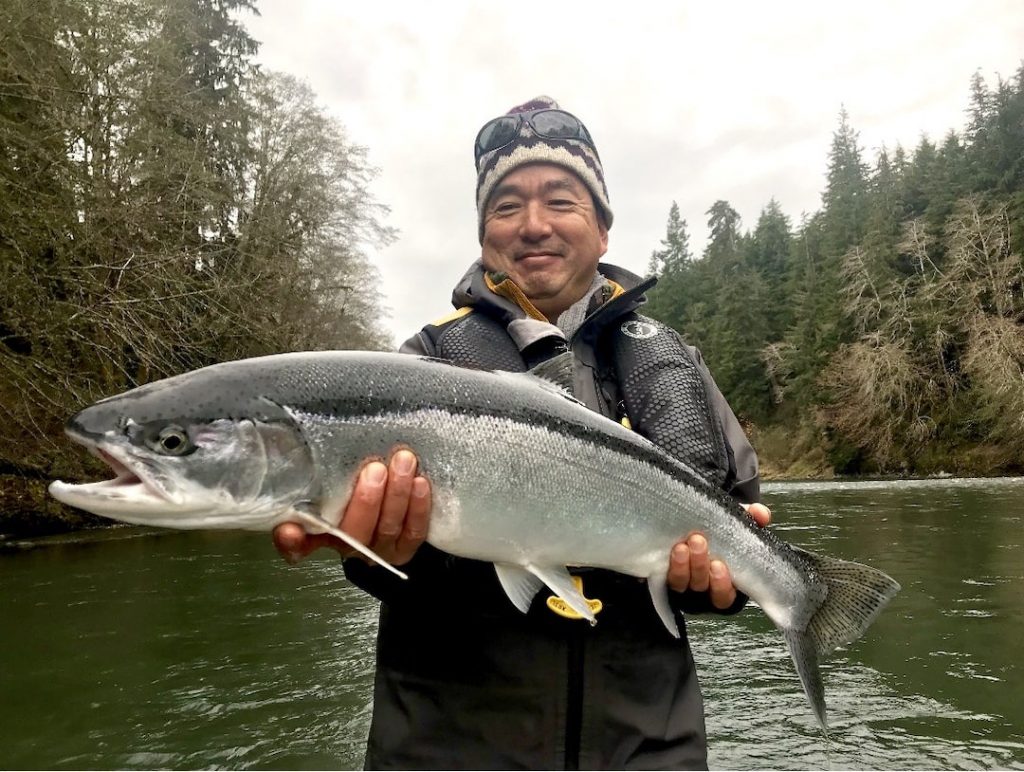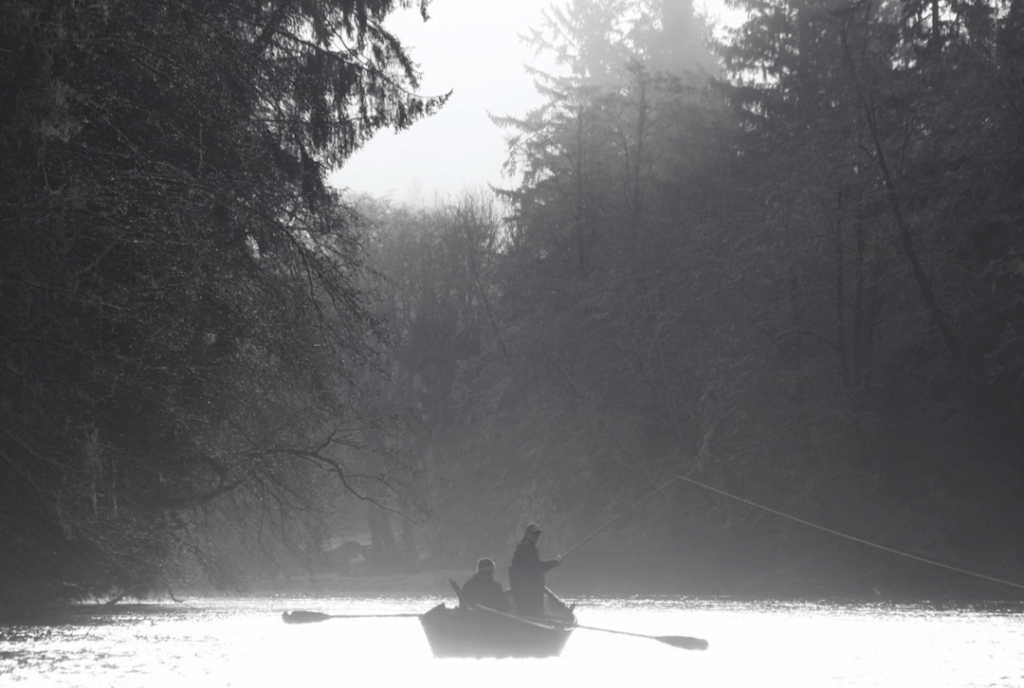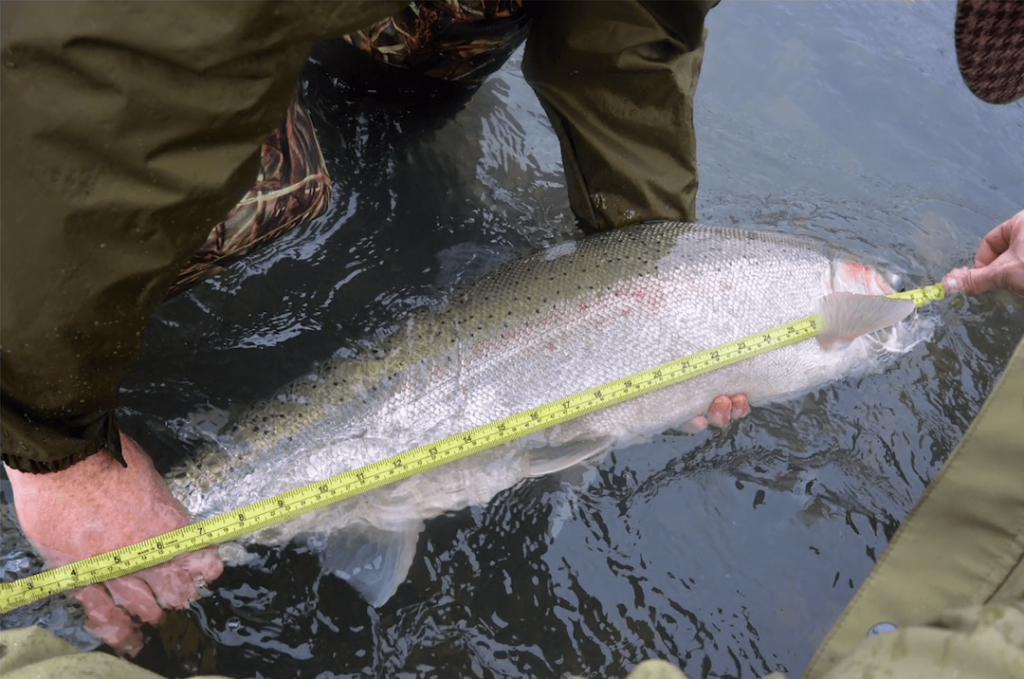
WDFW Outlines Options For Coastal Steelhead Season
Updated 8:45 a.m., November 30, 2020, at fourth paragraph with comments received over the long holiday weekend from WDFW coastal steelhead manager James Losee
State steelhead managers are looking at conservation-based restrictions for this winter’s fishery on Washington Coast rivers.
The options range from closing the coveted late winter/early spring timeframe – when the bulk of natives return – to expanded gear and boat restrictions throughout the season to only opening the Quillayute system to a blanket coastwide closure starting in a week.

Following last night’s online meeting with anglers and others, and upcoming state-tribal talks, Dec. 1 is the target date to have a fisheries plan in place.
“We will need to make a decision on steelhead fisheries this coming week, given that wild steelhead are entering streams now,” James Losee, WDFW coastal Fish Program manager, said on the Saturday after the meeting. “My objective with the public meeting was to gauge feelings and thoughts on the ideas that we had come up with to reduce encounters given the low forecast, increasing effort and failure to meeting management objectives in recent years. I was also hoping to hear new ideas as well and incorporate them if consistent with our objectives. When moving forward in discussions with our comanagers, I want to make sure that I know the social value of different options that may have similar benefit to steelhead. If there’s a preferred set of options that will provide adequate protection for steelhead and a set that is not preferred, WDFW will be able to prioritize options better.”
WDFW is reacting to two things: preliminary state forecasts that show wild steelhead returns this winter will fall well below escapement goals on several systems and similar issues in recent years, and expectations that the poor ocean conditions that have led to low expectations this season will also impact 2022’s and 2023 returns, meaning continued restrictions are likely.
Agency biologists and staffers outlined the struggles of coastal stocks from the Hoko River south to Willapa Bay on Zoom last night as more than 150 guides, anglers and others tuned in to the two-plus-hour-long webinar, available here. (Meeting materials are here.)
They say they’re trying to meet abundance guidelines in the statewide steelhead management plan and minimize mortalities on wild stocks to 10 percent or less.

Particularly troubling are recent returns to the Humptulips, popular for its early-returning hatchery winter steelhead but also home to wild fish.
Losee said postspawn surveys earlier this year found the worst escapement on record, and this year’s forecast is for the run to come in 534 fish below the goal of 1,600.
The overall Chehalis River system is expected to come in 2,000 wild winters below goal, the Queets/Clearwater 637 less than its baseline and Willapa Bay tribs 344 fewer.
Losee said that meeting escapement goals helps maximize systems’ ability to be productive over the long haul and better able to cope with the inevitable swings in ocean productivity that drive populations. But data collected since the 1980s tends to show that most systems are not seeing the numbers of fish they did in the past.
The four options WDFW came up with for discussion last night all would work to meet escapement goals by themselves, but the question was, what was most palatable?

The initial version of Option 1 would shut down the catch-and-release season on March 1 to protect the peak of the wild run later that month and in early April, while keeping popular hatchery fisheries on the Quillayute, Bogachiel, Calawah, Humptulips and elsewhere open and giving anglers a crack at the early part of the native run.
In response, one angler suggested moving the closure date back to around February 20.
Option 2 would keep the Quillayute system open while closing all other coastal waters. The river and its tribs are actually expected to meet the escapement goal by 3,376 wild winters, which is good but below most years since 1990.
However, if it were the only option, it would likely lead to crowding. It’s unclear if the Skagit-Sauk will open this winter – if they do, that might ameliorate things a bit, but given similar issues, it seems like a longer shot.
Option 3, a coastwide bait restriction, banning boat fishing on more sections and requiring the release of rainbow trout – which essentially are stay-at-home steelhead – drew more support than the other ideas, but some wanted to know specifics before getting behind it fully.
Tom Moonan, president of the Grays Harbor Sportsfishing Coalition, indicated support for it with possible changes, but termed no fishing from a boat “very discriminatory to some users.”

And then there was option 4, shutting it all down from Dec. 1-April 15, which would provide max protection for wild stocks, but also comes with foregone opportunity in terms of harvestable hatchery fish in late fall and early winter, and alienating the strongest advocates of steelhead, anglers themselves.
“We know that those that interact with them are some of the first to stand up as passionate steelheaders and sort of fight for their long-term recovery, so that’s a major con with a coastwide closure,” acknowledged Losee.
For emphasis, the PDF outlining Option 4 includes a screenshot of a Seattle Times 2020 opinion piece headline that reads, “Without anglers, river lose passionate advocates,” the gist of a blog post here several years ago.
Several folks agreed with the sentiment.
One question asked early on was how coastal tribes would react to a state closure. Losee said he couldn’t speak for them but said the comanagers also had conservation concerns and WDFW shutting down season would be clearly communicate that the agency did too.
For several attendees, the meeting came pretty late in the game – the season’s first hatchery fish turned up this week at several coastal hatcheries – and some called for creation of an advisory committee.
Jonathan Stumpf of Trout Unlimited called the confab “a small but positive step.”
“While I’m grateful to WDFW for hosting this town hall, as many in the meeting would agree, there is a long way to go toward improving these runs,” he said.
Stumpf worries about the stocks being listed under the Endangered Species Act and the impact of that on fisheries and communities.
Puget Sound steelhead were listed in 2007 and changes before then and implemented since, along with a 2014 lawsuit settlement, have left the winter fishery a shadow of a shadow of its former self.
“I truly believe that the only path forward is for the WDFW to convene a citizen-advisory group to start proactively understanding and addressing limiting factors on these populations and develop a coast-wide plan with a balanced mix of conservation and opportunity ideas to provide consistent returns and fisheries into the future. It was refreshing to hear that planning request from a variety of the participants in tonight’s meeting too,” Stumpf said.
